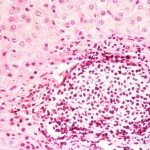Link to Pubmed [PMID] – 11297682
J. Gen. Virol. 2001 May;82(Pt 5):1075-83
Influenza A and C viruses share common sequences in the terminal noncoding regions of the viral RNA segments. Differences at the 5′- and 3′-ends exist, however, that could contribute to the specificity with which the transcription/replication signals are recognized by the cognate polymerase complexes. Previously, by making use of a transient expression system for the transcription and replication of a reporter RNA template bearing either type A or type C extremities, it was shown that a type C RNA template is transcribed and replicated with equal efficiency by either the type A or the type C polymerase complex, whereas a type A RNA template is less efficiently transcribed and replicated by the type C polymerase complex than by the type A complex. To explore the contribution of the nucleotides at the extremities of the RNAs to this type-specificity, the effect of mutations introduced either alone or in combination at nucleotide 5 at the 3′-end and at nucleotides 3′, 6′ or 8′ at the 5′-end of type A or C RNA templates were studied in the presence of either the type A or the type C polymerase complex. The results indicate that the nature of nucleotides 5 and 6′ contribute to type-specificity. Moreover, these results underline the importance of the base pairing between nucleotide 3′ and 8′ at the 5′-end of the RNA. Thus, it could be suggested that the nature of the nucleotides as well as the stability of the secondary structure at the extremities of the viral RNA are important determinants of type-specificity.

